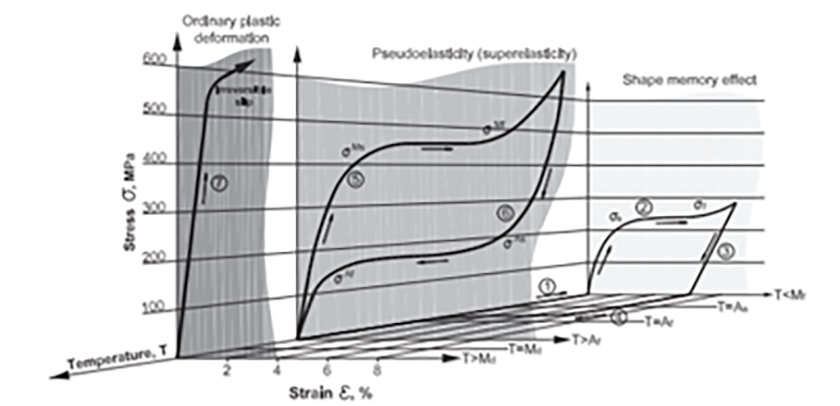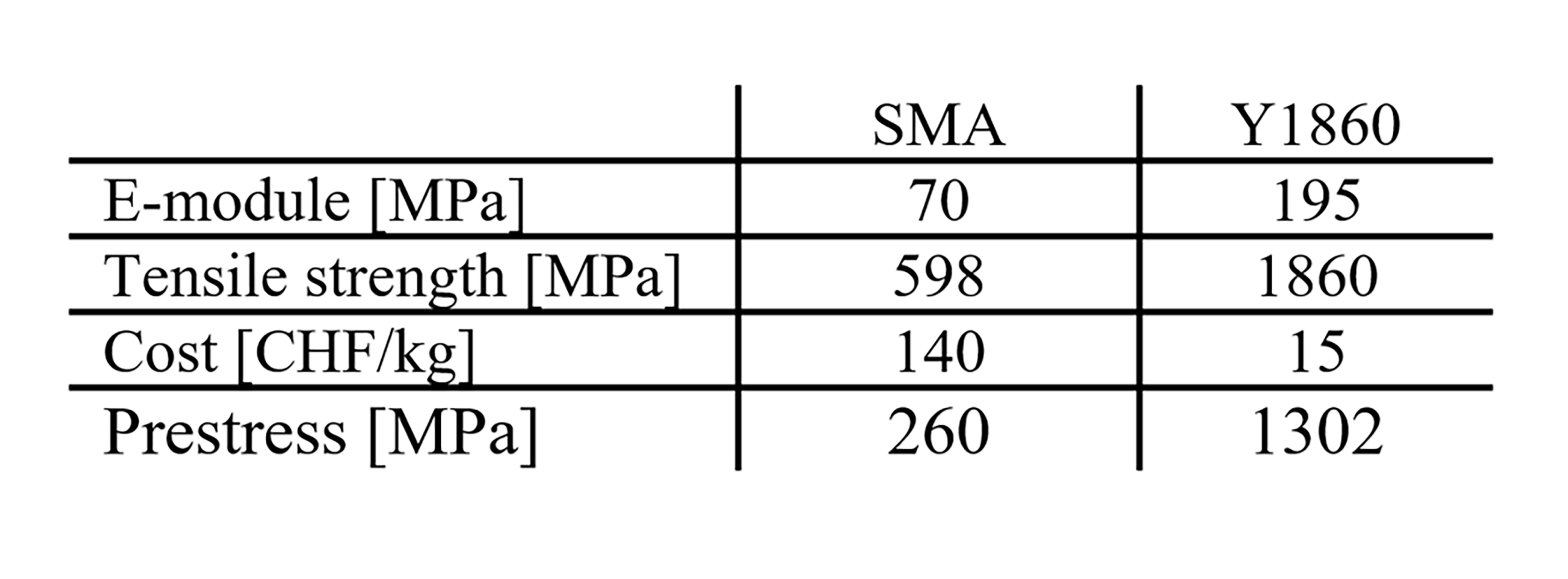Application of Shape Memory Alloys as a Prestressing Material in Bridge Design
Author: Fiorentina Ademi
Language: English
Abstract
Shape memory alloys (SMA) are a unique group of metallic alloys that can return to their original shape and create a recovery strain. This phenomenon is referred to as the super elasticity effect (SE) when initiated by unloading and as the shape memory effect (SME) when the material must be heated after it has been unloaded [1,2]. When the SME is inhibited, the alloy creates a recovery stress instead of a recovery strain. It was later discovered that this behaviour could be used to prestress concrete. The ability to prestress concrete without using anchor heads, ducts or hydraulic jacks makes the expensive material valuable and enables it to prestress existing concrete structures. Iron-based SMAs are increasingly used as prestressing tendons on existing reinforced concrete structures. To the author’s knowledge, almost no applications in new structures exist since the possibility of using a more cost- and prestress-effective material outweighs the advantages of easy application and no loss of friction during activation. This Master’s thesis investigates the applicability and cost-effectiveness of iron-based SMA re-bars as a prestressing material in newly constructed bridges.
The investigation consisted of a thorough literature review on the material behaviour and two case studies, where durability issues of bridge systems were researched and possible solutions by using SMA re-bars as a prestressing material were developed. Modified stress analysis including SMA re-bars of existing design examples were conducted for both case studies. The stress states at critical cross-sections were analysed.
The first case study investigated the durability issues of concrete decks in steel composite girders. When the deck of steel composite girders is cast from one bridge end to the other, significant tensile stresses develop in the concrete segment above the pier area while the span sections are cast. [35,36] A three-span bridge with a maximum span length of 50 m develops tensile stresses in the range of 2.5 MPa. It was observed that including SMA re-bars could compensate for tensile stresses developed during sequential concreting, showing that SMAs are applicable as prestressing material for concrete slabs of steel composite girders. Alternative solutions, such as prestressing the concrete slab with conventional prestressing strands or increasing the steel cross-section, were recognised to be more cost-effective. Considering that the applications of SMAs does not include drawbacks, such as difficulties to remove the stressed strands during deck replacement justifies the use of SMA re-bars.
In the second case study, durability issues of cast-in-situ concrete decks and spliced connections of precast girders were investigated. They are usually prestressed after the concrete deck is cast. This, however, would lead to stress limit exceedance during concrete deck replacement [41]. Additionally, connections of precast elements create weak spots in the girder due to the lack of sufficient mild and prestressing reinforcement compared to the precast parts [40]. A significant number of SMA re-bars can compensate the developed tensile stresses in the concrete deck, and therefore ensures the durability. The use of SMA re-bars to prestress the concrete deck of the analysed spliced girder was proven applicable, but the cost per girder would increase by around 140%, which implies that the solution is not economical.
However, the analyses have also revealed that the durability of connections between precast panels can be ensured by embedding SMA re-bars with a spacing of 0.2 m into created slots in the precast elements. The concrete deck of spliced and steel composite girders could be constructed with precast panels, including SMA as a prestressing material at the connections to increase their durability and ensuring no drawbacks, such as deck replacement problems and tensile stresses developed during concreting.


